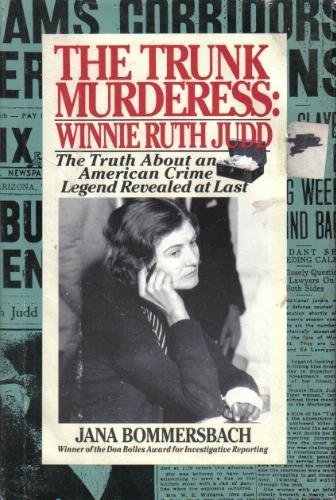Synopsis
The woman who allegedly committed one of history's most heinous crimes reveals for the first time--through an investigative reporter--her role in the notorious 1931 "trunk murder"
Reviews
In one of the most sensational cases of the 1930s, Judd was accused of killing two women with whom she had previously shared an apartment in Phoenix, hacking up one of the bodies and taking all the remains in two trunks and a suitcase to L.A., where they were discovered. She confessed to various acts in connection with the murders, was found guilty and sentenced to die; on the eve of her execution she was judged insane, and she spent the years from 1932 to 1971 in confinement, escaping seven times but always being recaptured. Even at the time of her arrest and trial there were doubts that the petite, slight defendant had acted alone-doctors had quickly deduced that the hacked-up corpse had been dismembered with a surgical skill she did not possess-but the identity of her lover, a prominent businessman, Happy Jack Halloran, was kept out of the trial and the local papers. Phoenix-based journalist Bommersbach skillfully recaps the entire story, including suppression of evidence by the police, an inept courtroom defense and a vindictive juror. Those interested in women's causes will want to read her account, as will Arizona residentsalthough the portrait of 1930s Phoenix as the center of hypocrisy in the Southwest is unflattering. Photos not seen by PW. First semal to Phoenix magazine; Literary Guild alternate.
Copyright 1992 Reed Business Information, Inc.
The "truth" about Winnie Ruth Judd appears as complicated as the "truth" about JFK's murder or Marilyn Monroe's death. In 1931, Winnie was found guilty of killing her two friends in Phoenix and dismembering the body of one. She spent almost 40 years in prisons and insane asylums. In setting out to research the crime, Bommersbach uncovers a welter of lies and unanswered questions. It is a sensational story. Consider a near-hysterical woman accompanying bloody trunks across the country and later hiding out in a closed department store. Consider that same woman subsequently escaping half a dozen times from the asylum--once to a six-year life of luxury. Now add in the seedy undercurrents of Depression-era lesbianism, political corruption, prostitution, drugs, and smelly cover-ups, and one has all the ingredients for a good mystery. What is shocking is not so much that Winnie could not have acted alone but that so many people over so many years perpetuated that lie. Bommersbach speculates about what really happened, but much is left open. She did interview Winnie Ruth Judd, but the frail old woman was cautious--apparently still fearing reprisals. This is recommended for true crime collections. Previewed in Prepub Alert, LJ 7/92.
- Lois Walker, formerly with Winthrop Univ. Lib., Rock Hill, S.C.
Copyright 1992 Reed Business Information, Inc.
"About this title" may belong to another edition of this title.
